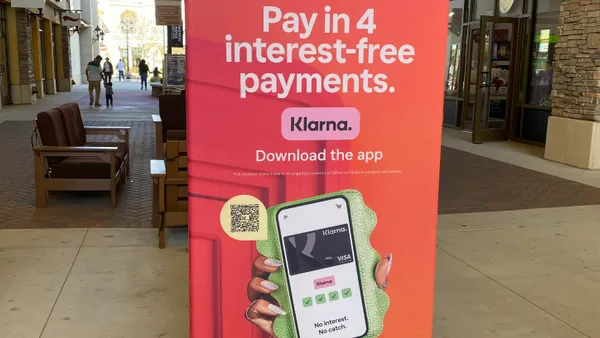Dive Brief:
- Raising its growth expectations, New York-based card company American Express projects revenue growth in the range of 18% to 20% this year, and growth in excess of 10% annually over the long term, the company announced during a fourth-quarter earnings call Tuesday. Revenue rose 17%, net of interest expense, for 2021, the company reported in a press release.
- Amex CEO Steve Squeri said new card acquisitions reached 2.7 million in Q4, propelled by strong demand for the company's premium, fee-based products. Millennials and Gen Z are driving growth, he said, representing around 60% of the new accounts acquired globally in 2021.
- The company’s revenue rose 30% in the fourth quarter to $12.1 billion, reflecting higher spending among cardholders compared to earlier in the pandemic. Net income for 2021 was $8.1 billion, up from $3.1 billion for 2020, which was hobbled by the COVID-19 pandemic.
Dive Insight:
Amex cardholder spending hit record levels in the final quarter of 2021, and Squeri credited the company’s investment strategy with driving that spending, fueling customer acquisition and growing loan balances. "Those are the things that give us all the confidence in the world," he said.
Revenues were well above original expectations for the year, Amex Chief Financial Officer Jeff Campbell said, and that's "part of what emboldens us to launch our new growth plan."
Squeri said the company's plan resets longer term aspirations for revenue and earnings-per-share growth, to levels that are higher than those pre-pandemic. "As we think about 2023, the continuation of the recovery tailwinds could drive revenue growth in the mid-teens," Squeri said.
During the Q3 2021 earnings call, Squeri had said the card company was pleased with its acquisitions among Millennial and Gen Z consumers, suggesting marketing spend was paying off. Overall, Amex spent $5.3 billion on marketing last year.
Campbell said the company’s focus on expanding value propositions and digital capabilities to attract younger cardholders has paid off, fueling 50% growth in spending from Millennial and Gen Z customers.
A few years ago, "we talked about being the premium card provider, and I think the skepticism was from Millennials and Gen Z," Squeri said. "That skepticism, from my perspective, is over." As for market penetration with Millennials, he said the company is closer to 10% than 90%, and sees "a lot of opportunity and a lot of runway."
Campbell said snagging these younger consumers is particularly exciting for the company considering its "extremely high" retention rates.
Spending growth was driven by continued increases in goods and services spending, which was 24% above pre-pandemic levels. Travel and entertainment spending reached 82% of pre-pandemic levels, fueled by stronger consumer travel spending.
"We did see some modest impacts from the omicron variant," Campbell said, regarding travel and entertainment spending. That spending will eventually fully recover, he added, but it depends on customer type and region.













